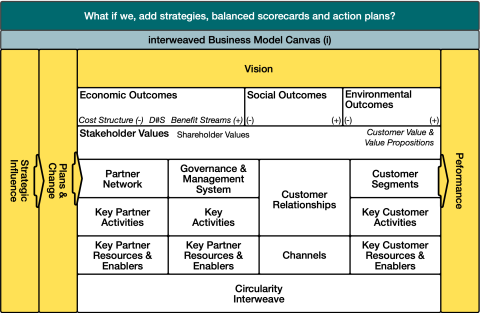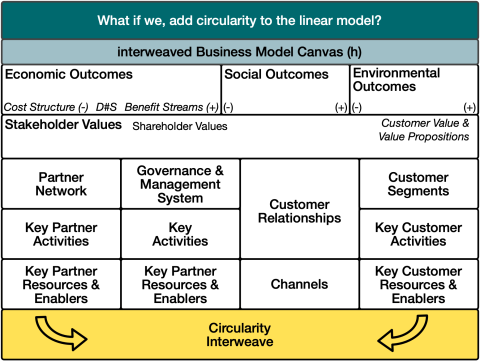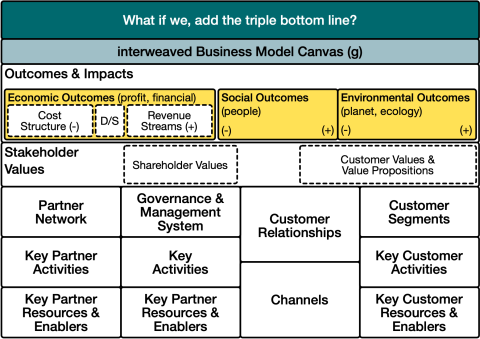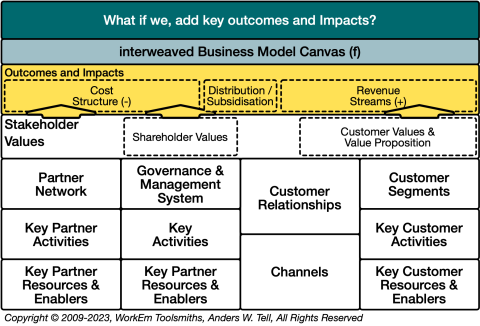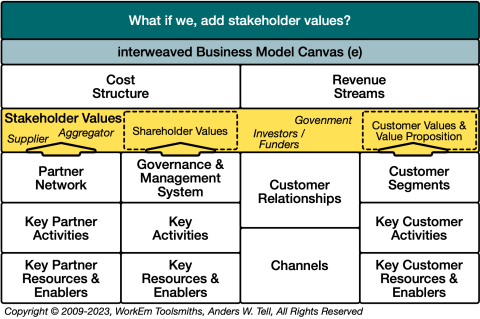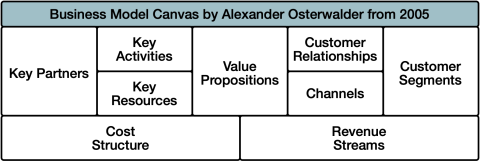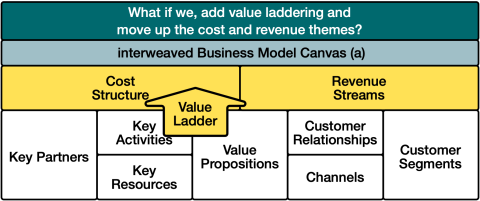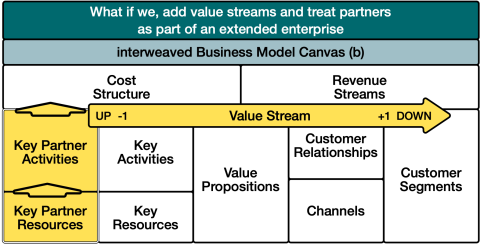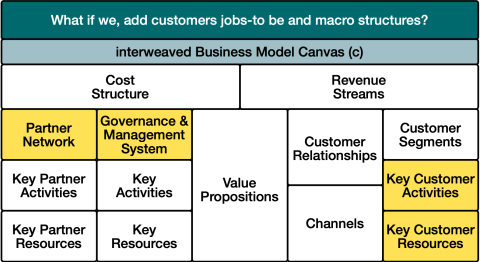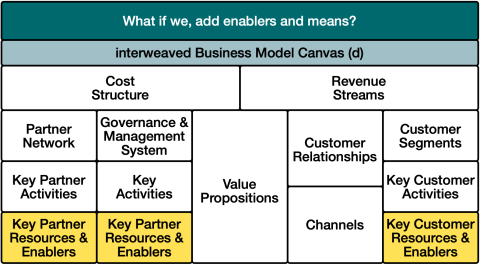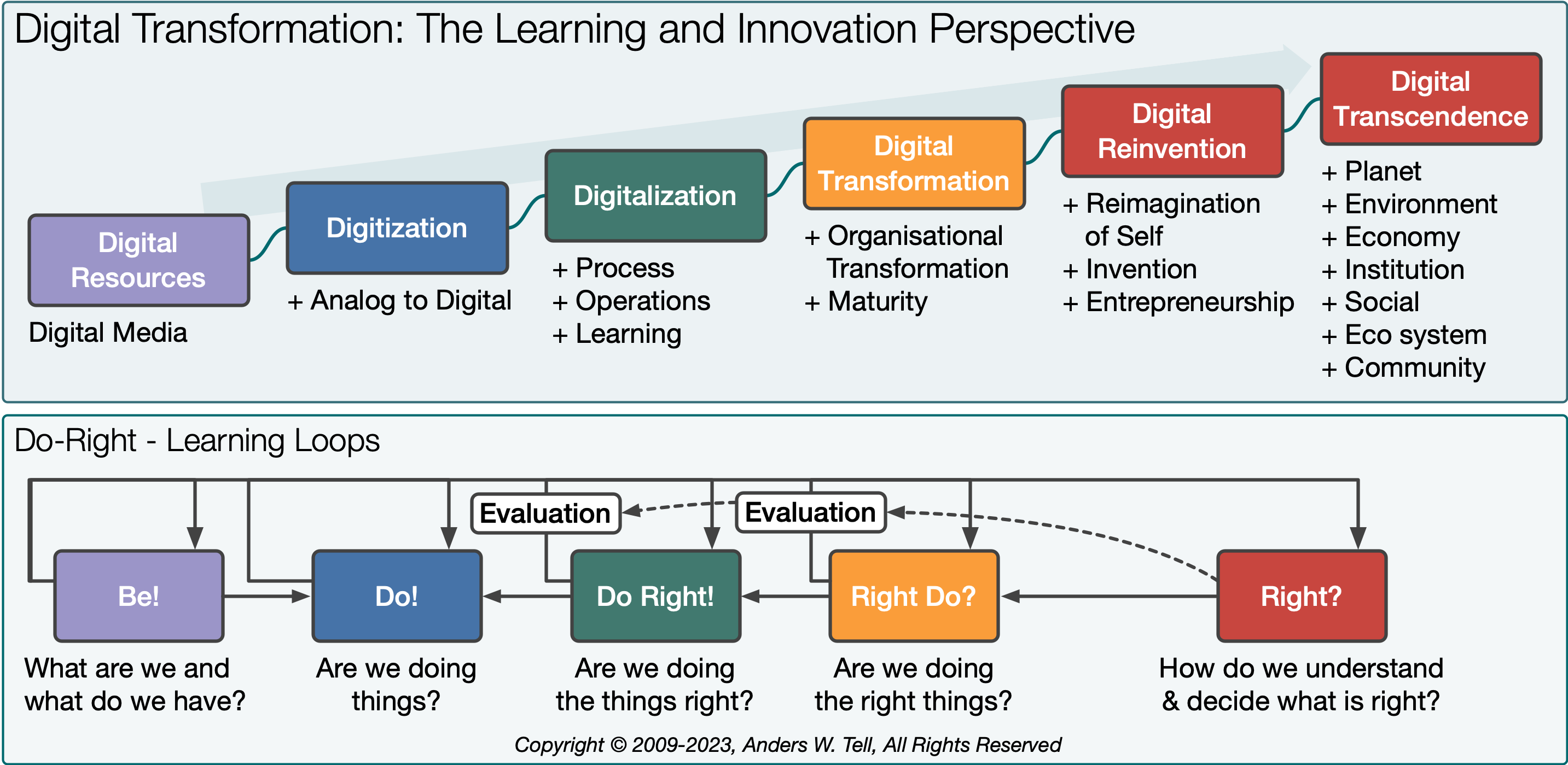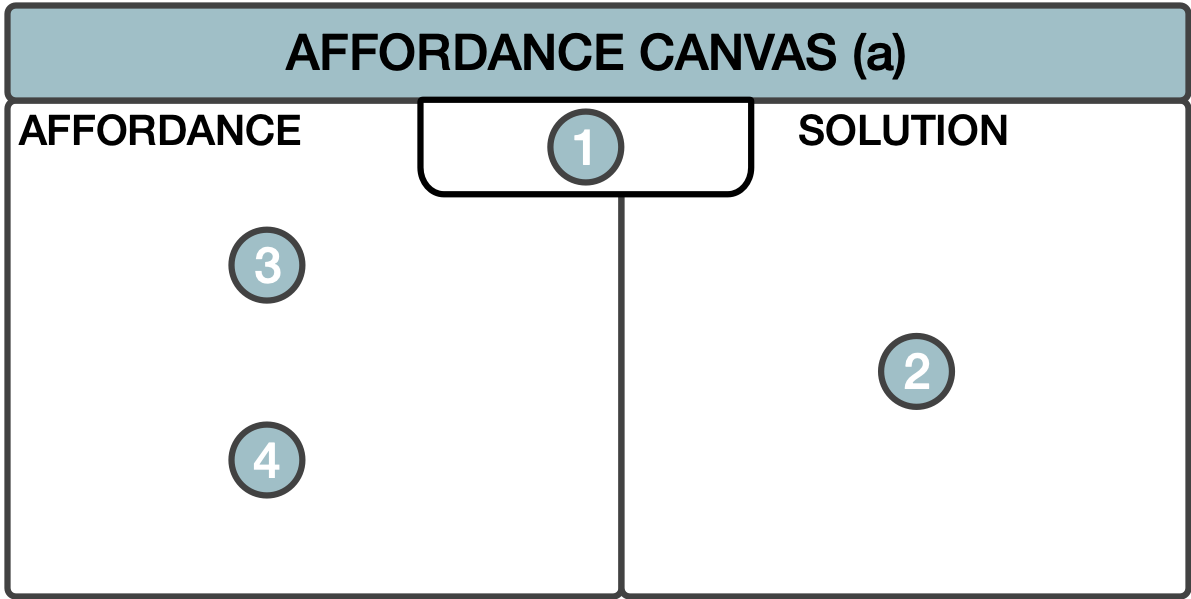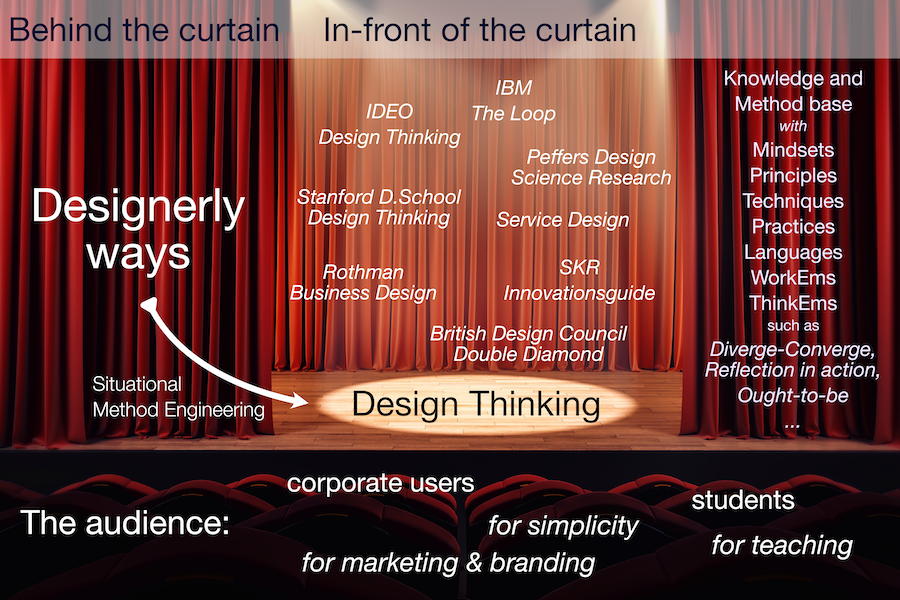The popular Business Model Canvas (BMC) from 2005 by Alexander Osterwalder et al. offers a basic tool for discussing business models. It is often used in workshops where it provides simplicity for people who do not typically develop business models. The simplicity comes with a price; it is easy to fall off the canvas when discussing deeper aspects ...
Sharing and Blog
WorkEm help you improve who you are, what you do and what you aspire to.
In this transformation, we introduce the concept of Strategy to the iBMC. More to come soon. . The full article is found here:
In this transformation, we introduce the concept of Circular Economy into the up until now the linear iBMC. More to come soon. . The full article is found here:
In this transformation, we introduce the concept of Triple Bottom Line into the iBMC. The central idea behind the Triple Bottom Line is that organisations should evaluate their performance from a broader perspective, including their social and environmental impacts, in addition to their economic performance—rather than focusing on generating profit...
In this transformation, we generalise the concepts of "Cost Structure" and "Revenue Streams" into an "Outcomes and Impacts" theme and introduce the concepts of "Distribution" and "Subsidisation". Enabling: This opens up discussions about different kinds of positive (+) and negative (-) outcomes and impacts that are considered relevant and that stak...
In this transformation, we generalise the concept of "Value Proposition" into "Stakeholder Values" that are moved up the Value Ladder into a position above the organisation, partners and customer. Enable: This opens up discussions about values and benefits for more stakeholders than the customers. Interweave: The broadening of "Value Propositions" ...
0. The starting point: Business Model Canvas The starting point and baseline is the well-known Business Model Canvas (BMC) from 2005 by Alexander Osterwalder, as illustrated in the book "Business Model Generation" from 2010. he canvas contains 9 parts that are translated into 9 themes and talking points using the Bricks and Mortars practice. We lea...
a. What if we, add value laddering and move up the cost and revenue themes? In this first transformation, we make a seemingly trivial change by moving the cost structure and revenue streams up to the top of the canvas. This graphical change introduces something that later will be proven to be important: value-laddering. A value ladder links differe...
b. What if we, add value streams and treat partners as part of an extended enterprise? In this transformation, we first add or rather make visible the underlying value stream or the end-to-end collection of activities that create a result for or satisfy the customers. A value chain links together up-stream partner activities with a company's activi...
c. What if we, add customers jobs-to be and macro structures? In this transformation, we balance the interweaved Business Model Canvas in two ways. Firstly, we add "Key Customer Activities" and "Key Customer Resources" themes in addition to "Customer Segment(s)" to match the organisation's and partner's activities and resources.Secondly, we add a "...
d. What if we add enablers and means? In this Transformation, we add the concept of "Enabler" to the "Key Resources" theme. Enable: This opens up discussions about key elements that are means, help, support, facilitate or enable the organisation in focus to create and sustain value. This is in addition to having access to or own and use resou...
The popular Business Model Canvas (BMC) from 2005 by Alexander Osterwalder et al. offers a basic tool for discussing business models. It is often used in workshops where it provides simplicity for people who do not typically develop business models. The simplicity comes with a price; it is easy to fall off the canvas when discussing aspects related...
A Learning perspective of Digital Transformations provides a pedagogical tool for discussions about the nature of digital transformation projects. However, many projects include Digitisation, Digitisation, and Digital Transformation elements. This perspective brings to the surface focused definitions of related words and phrases such as digitisatio...
Have you encountered this situation? When someone makes a presentation or gives you a model, you simply cannot understand what to do with it. Unfortunately, it is quite common, especially when the producer uses a well-defined method. Here the method provides the answers even before the questions are asked.It is also common that the producer really ...
Some say, they exist in documents, specifications or plans. Some say, they exist out there in the real world. Others say no, one cannot find them in the wild. This is a topic that Interweaving often works with. Instead of accepting unnecessary and often disrupting opposing points of views, Interweaving shift focus from "either/or" to "and" through ...
The seed: The 'Double Design Diamond" (DDD) is a popular way to describe and orient what design is and how design is done. One of the most important features of the DDD is that it is visually appealing and is used as a baseline for describing a design process. The British Design Council even claims it is universally accepted, Design Council. But is...
Diamond (DDD) is started as introduced in "What If We Redesign The (Double) Design Diamond To Become Interweaved?" What if we redesign the Design Diamond? The goal is to create new knowledge and explore how essential aspects of Design can be represented in a diamond form. The resulting interweaved Design Diamond (iDD) provides an explanatory schema...
Power up your designs using the Affordance Canvas to make the most of the possibilities in the age of crisis and Corona. The Affordance Canvas results from the effort to enrich design thinking using Interweaving. How:- After the team has formulated a problem point-of-view and found a solution, the team turns around and explores the affordance of th...
A debate is raging about whether design thinking is the same as design. A quick overview of the field reveals quite a few popular design and service thinking approaches that, to a degree, are similar. They all present a graphical overview of a simple method with 5-8 steps, including problem-finding and solution creation. But is that all there is? I...
There is an interesting relationship between design and dance. In dance, beginners start out by learning basic patterns. Just as is the case with design thinking and service design, where the simple and appealing 5, 6 or 7-step processes from books, universities and famous companies lure participants into enjoying design. Both beginner dancers and ...
By accepting you will be accessing a service provided by a third-party external to http://workem.com/

